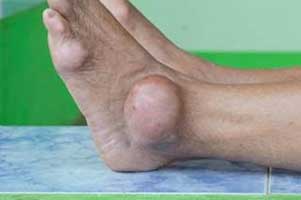- Home
- Editorial
- News
- Practice Guidelines
- Anesthesiology Guidelines
- Cancer Guidelines
- Cardiac Sciences Guidelines
- Critical Care Guidelines
- Dentistry Guidelines
- Dermatology Guidelines
- Diabetes and Endo Guidelines
- Diagnostics Guidelines
- ENT Guidelines
- Featured Practice Guidelines
- Gastroenterology Guidelines
- Geriatrics Guidelines
- Medicine Guidelines
- Nephrology Guidelines
- Neurosciences Guidelines
- Obs and Gynae Guidelines
- Ophthalmology Guidelines
- Orthopaedics Guidelines
- Paediatrics Guidelines
- Psychiatry Guidelines
- Pulmonology Guidelines
- Radiology Guidelines
- Surgery Guidelines
- Urology Guidelines
Exposure to occupational inorganic dust may increase gout risk

Gout is a debilitating form of inflammatory arthritis caused by the accumulation of uric acid in the joint. Previous studies have established an association between occupational exposure to inorganic dust and an increased incidence of inflammatory rheumatic diseases such as rheumatoid arthritis. However, no study until now has established an association between occupational exposure to inorganic dust and gout.
Valgerdur Sigurdardottir, the department of rheumatology and inflammation research at the University of Gothenburg, Sahlgrenska Academy in Sweden, and colleagues hoped to draw out a specific association with gout by evaluating inorganic dust exposure alongside more established gout risk factors such as alcohol use and obesity. Other potential confounders that underwent analysis included psoriasis, renal disease and diuretic treatment.
For the study, the researchers obtained data from the population-based health care database of the Western Swedish Health Care Region. They analyzed outcomes for 6,120 individuals diagnosed with gout between 2006 and 2012, and 25,074 controls. The cases were matched to up to 5 control cases (n=25074) based on age, sex, and place of residence.
Also Read: EULAR releases 2018 updated recommendations for diagnosis of gout
Key findings of the study include:
- Univariate analysis showed a significant association between gout and occupational exposure to inorganic dust for the full cohort.
- While this association was slightly reduced on multivariable analysis for the full cohort, the risk remained significant among women.
- Alcohol use was significantly associated with gout incidence in both the univariable and multivariable analyses.
- Obesity carried more than the threefold risk for gout in both the univariable and multivariable analyses.
Also Read: Eating low carbohydrate foods may reduce gout attacks
“Further study is needed to understand the dangers of exposure to inorganic dust in relation to gout and other inflammatory rheumatic diseases,” Sigurdardottir said.

Disclaimer: This site is primarily intended for healthcare professionals. Any content/information on this website does not replace the advice of medical and/or health professionals and should not be construed as medical/diagnostic advice/endorsement or prescription. Use of this site is subject to our terms of use, privacy policy, advertisement policy. © 2020 Minerva Medical Treatment Pvt Ltd